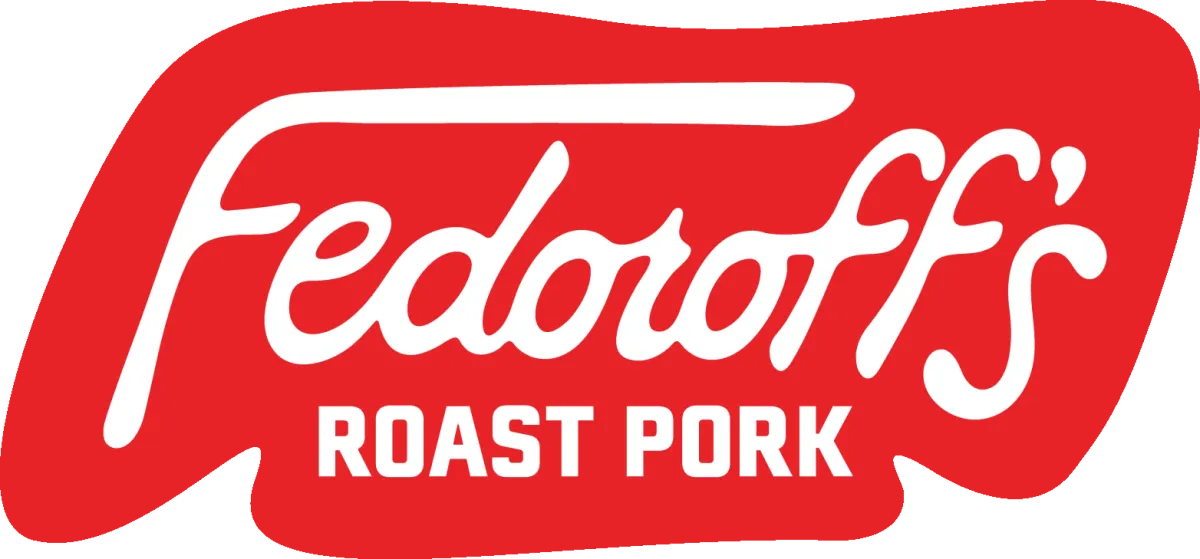
Next Generation Hospitality Solutions
Advanced Systems, Strategy, and Support for ambitious spirits and hospitality brands.
Ai and Automation Systems
Data Driven Strategies
Cutting Edge Training, Community Building and Support
CLICK BELOW TO WATCH FIRST!
Jason Littrell, Ceo
For over 15 years, we've helped forward-thinking spirits and hospitality brands grow with proven systems, strategies and support.
Get the Hospitality Strategy Lab newsletter:

Restaurant Survival Now Depends On These Tech Decisions
The restaurant industry is facing an extinction-level event.
When Hooters abruptly shuttered over 30 company-owned locations across multiple states in May 2025, it wasn't just another casualty in the food service sector. It was a warning signal. The 42-year-old chain had filed for Chapter 11 bankruptcy protection just two months earlier, citing a staggering $376 million in debt, declining sales, and changing consumer behaviors.
They're not alone.
Red Lobster, TGI Fridays, and BurgerFi have all filed for bankruptcy amid difficult market conditions. In fact, nearly 33% of chains in the Technomic Top 500 experienced a net decrease in locations in 2023.
Behind these failures lies a common thread: technological complacency.
While most discussions about restaurant failures focus on menu innovation, labor costs, and changing consumer preferences, the technology infrastructure supporting these operations often remains an afterthought. This oversight has proven fatal.
The Restaurant Tech Stack Crisis
Traditional restaurant technology stacks were designed for stability, not resilience. They were built to handle predictable patterns, not unprecedented disruptions.
Legacy point-of-sale systems. Disconnected inventory management. Analog scheduling tools. Manual accounting processes.
These technological foundations might have sufficed in 2019. They crumbled under pressure in 2023.
The restaurant chains now filing for bankruptcy protection share a common failure: they treated technology as a cost center rather than a strategic asset. They invested in maintaining systems rather than transforming them.
Technology isn't just about efficiency. It's about survival.
The New Restaurant Tech Stack Playbook
Forward-thinking restaurant operators are rebuilding their technology foundations with crisis-proofing as the primary objective. This isn't about chasing trends. It's about creating systems that bend without breaking.
The crisis-proof restaurant tech stack has five essential layers:
1. Flexible POS Architecture
Modern restaurant point-of-sale systems must transcend simple transaction processing. They need to function as the central nervous system of the entire operation.
Crisis-proof POS systems feature:
Cloud-native architecture that enables real-time updates without service interruptions. API-first design that allows seamless integration with both current and future technologies. Device-agnostic interfaces that work across tablets, kiosks, mobile devices, and traditional terminals.
Most importantly, they provide instant visibility into performance metrics that matter during crisis situations: hourly sales velocity, labor cost percentages, and contribution margin by menu item.
2. Intelligent Inventory Systems
Restaurants that survived recent industry upheavals implemented inventory systems that did more than count stock.
Their systems predicted supply chain disruptions before they happened. They automatically adjusted par levels based on sales volatility. They identified alternative suppliers when primary vendors couldn't deliver.
The difference between survival and bankruptcy often came down to having the right ingredients at the right time.
Crisis-proof inventory systems connect directly to vendor databases, enabling real-time price comparisons and automatic substitutions when necessary.
3. Dynamic Labor Management
Labor represents the most significant controllable expense for most restaurants. It's also the most complex to optimize during volatile periods.
Restaurants with crisis-proof tech stacks implement labor management systems that:
Forecast staffing needs based on multiple variables beyond historical patterns. Create flexible scheduling templates that can adapt to sudden changes in business volume. Provide employees with self-service tools to swap shifts, request time off, and communicate with management.
These systems don't just cut costs. They create operational resilience by ensuring the right staff are present when needed most.
4. Omnichannel Revenue Capture
The restaurants that thrived during recent industry disruptions had already built robust systems for capturing revenue beyond their physical locations.
Their technology enabled seamless ordering across first-party websites, branded mobile apps, third-party delivery platforms, and in-store kiosks. They unified these channels into a single view of the customer.
The ability to pivot between revenue streams proved essential when traditional dine-in service became impossible.
Crisis-proof revenue systems maintain direct customer relationships while leveraging third-party platforms for discovery and convenience.
5. Predictive Analytics Layer
The final and perhaps most critical component of a crisis-proof restaurant tech stack is a predictive analytics layer that transforms data into actionable intelligence.
This isn't about generating reports. It's about creating early warning systems.
Advanced restaurant analytics platforms now monitor hundreds of internal and external variables to identify potential problems before they impact operations. They track everything from social media sentiment to weather patterns, from staff turnover rates to competitive pricing changes.
These systems don't just present data. They recommend specific actions based on emerging patterns.
Implementation Roadmap
Building a crisis-proof restaurant tech stack doesn't require scrapping existing systems entirely. It demands a strategic approach to evolution.
Start with an honest technology audit. Identify systems that would fail under pressure. Prioritize replacements based on business impact, not implementation difficulty.
Focus on integration capabilities. New systems should connect seamlessly with both legacy technologies and future additions.
Invest in staff training. Technology transformation fails when employees resist change. Comprehensive training programs that emphasize benefits over features increase adoption rates dramatically.
Measure results religiously. Each technology investment should produce quantifiable improvements in specific operational metrics.
The Cost of Inaction
Restaurant operators often hesitate to invest in technology upgrades during uncertain times. This hesitation represents a fundamental misunderstanding of modern business reality.
The cost of technological complacency now exceeds the cost of transformation.
Hooters and other struggling chains didn't fail because they invested too heavily in technology. They failed because they didn't invest enough, soon enough.
The restaurant industry has entered an era where technology capability directly determines market viability. Those who treat technology as a strategic imperative will survive. Those who don't will join the growing list of familiar brands that no longer exist.
The choice isn't between investing in technology or not. It's between investing now or disappearing later.
Building for Resilience
The restaurant technology landscape continues to evolve at an unprecedented pace. New solutions emerge weekly, each promising to solve critical operational challenges.
Amid this constant change, the fundamental principle remains: technology should create resilience, not just efficiency.
The restaurants that survive the current industry upheaval will be those that build technology stacks capable of adapting to whatever comes next. They'll implement systems designed not just for today's challenges but tomorrow's unknowns.
In an industry defined by thin margins and fierce competition, technology has become the decisive factor between survival and bankruptcy.
The new playbook is clear: build for resilience, invest strategically, and treat technology as the lifeline it has become.
Who is Jason Littrell?
Jason Littrell is a seasoned cocktail maker, bar consultant, event producer, speaker, author, and brand marketing expert with over a decade of experience in the hospitality industry.
What services does Jason Littrell offer?
Jason offers a range of services including bar consultancy, cocktail menu development, staff training, event production and management, keynote speaking, educational workshops, and brand marketing strategies in NYC, 100% free of charge. For more details, please use the chat widget or contact form.
Can Jason Littrell help in designing and setting up a new bar?
Absolutely. Jason specializes in bar consultancy, including design, menu creation, staff training, and operational efficiency, tailored to the unique needs of each client.
As a speaker, what topics does Jason typically cover?
Jason speaks on a range of topics including cocktail culture and history, bar and hospitality industry trends, brand building, and customer engagement strategies.
Has Jason Littrell authored any books or articles?
Yes, Jason is the author of Bartender as a Business, and contributed to several publications in the field of cocktails and hospitality.

How does Jason approach brand marketing in the hospitality sector?
Jason combines his deep industry knowledge with innovative marketing techniques to create compelling brand narratives and engagement strategies that resonate with target audiences.
What is Kinetic Management Systems?
KMS is the business Jason owns that implements hospitality management systems for sales, marketing HR, and operations. This site is built with KMS, and if you call any of the phone numbers, fill out any of the forms, engage with the chat, you're engaging with KMS systems. For more info, check out kmsops.com
What makes Jason’s approach to cocktail making and bar consultancy unique?
Jason's approach is rooted in a deep understanding of both the art and science of cocktail making, combined with a keen insight into current trends and customer preferences, making his consultancy highly effective and personalized.
Terms of Service

(C) 2025 Critical Mass Events, LLC (d.b.a. Jason Littrell, Ltd.)
All Rights Reserved
Text or Call 917-983-2150
















